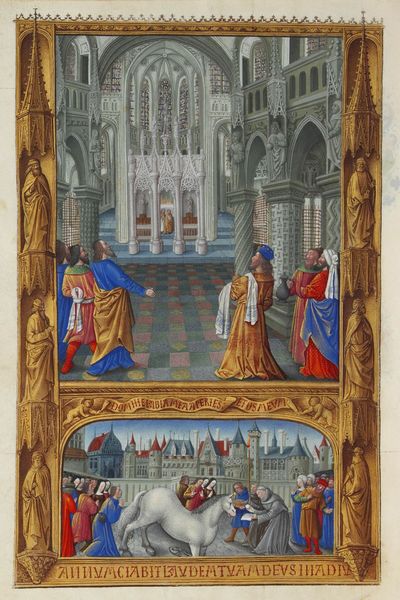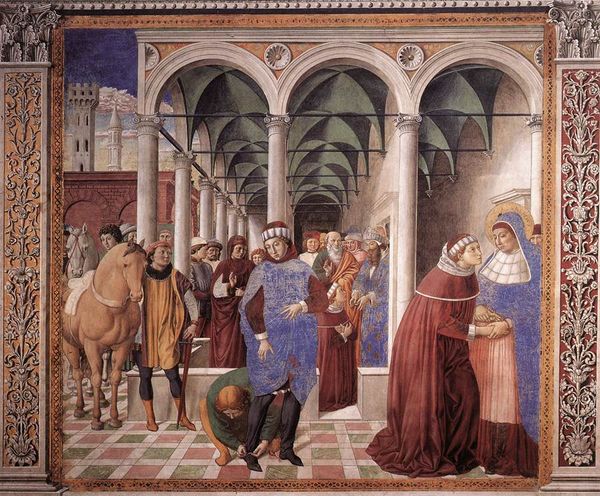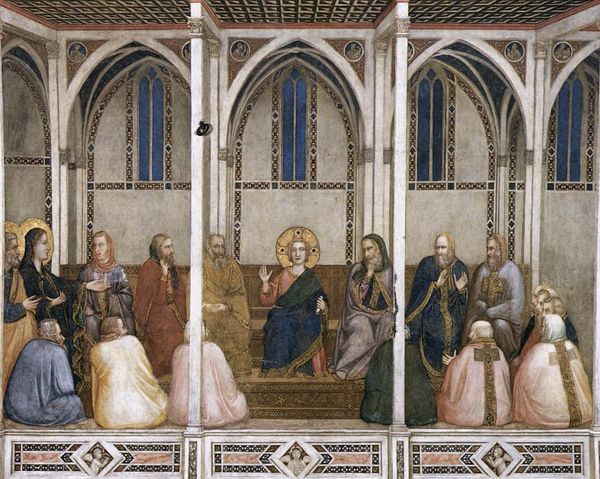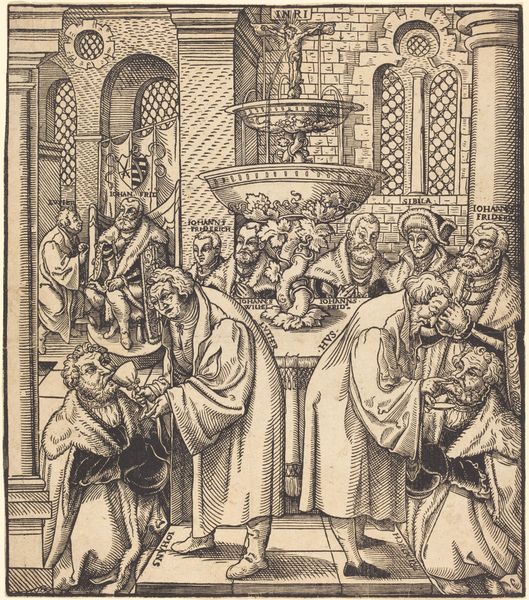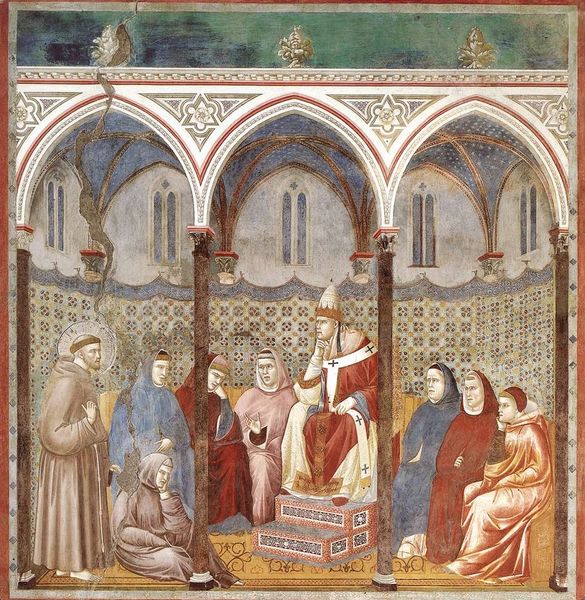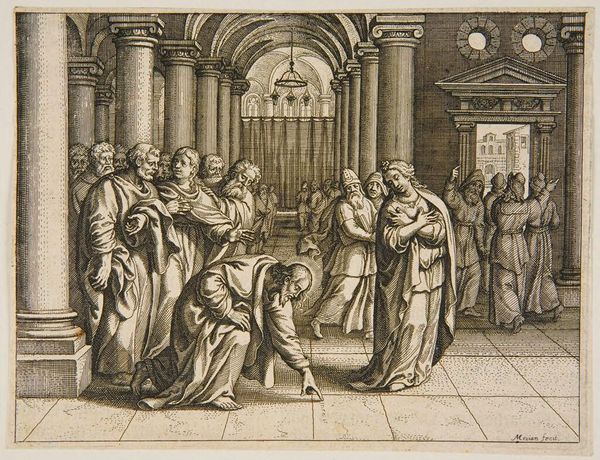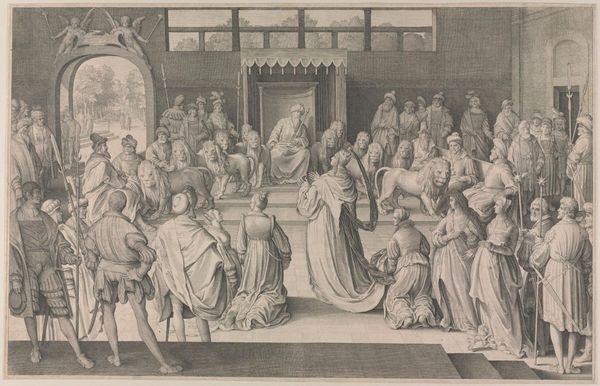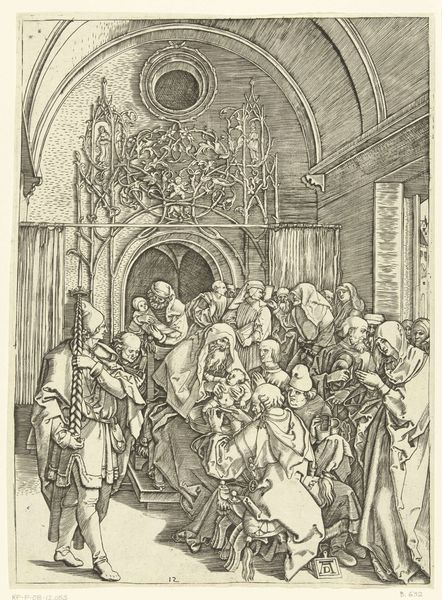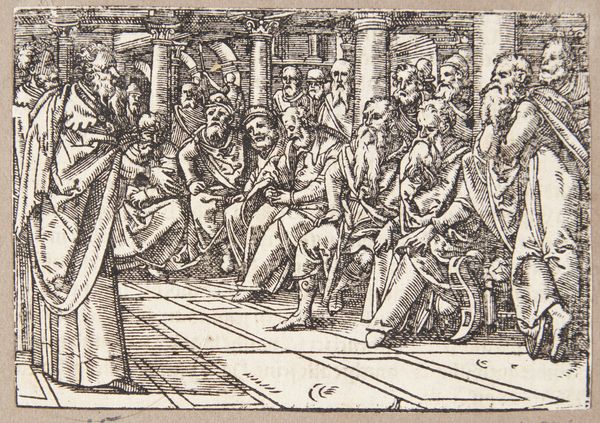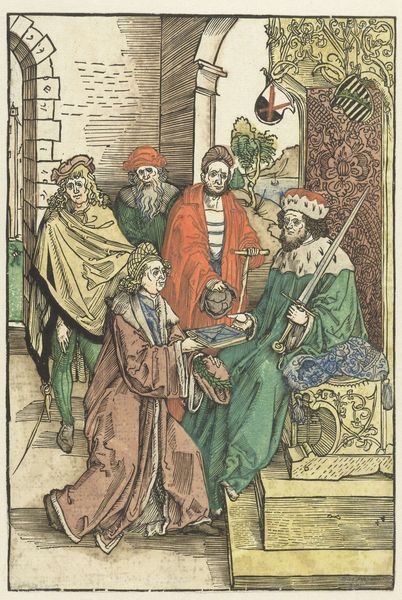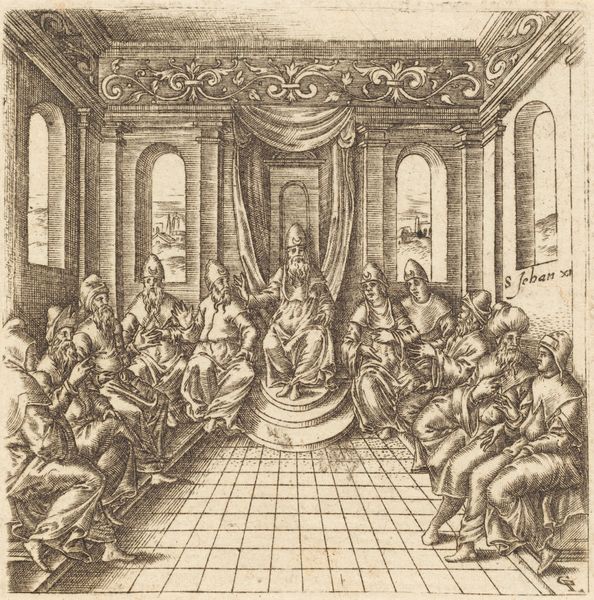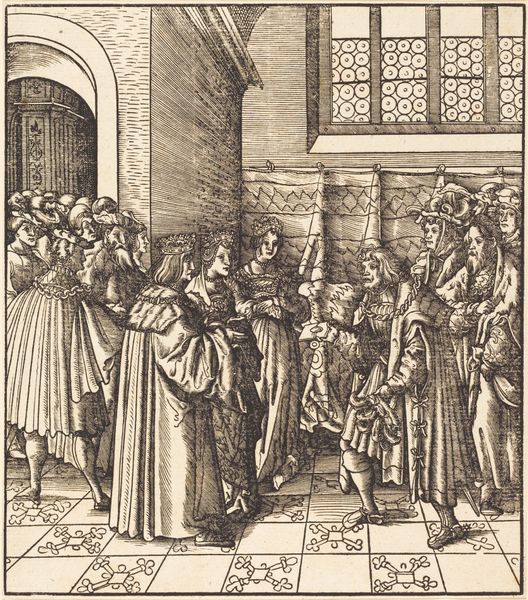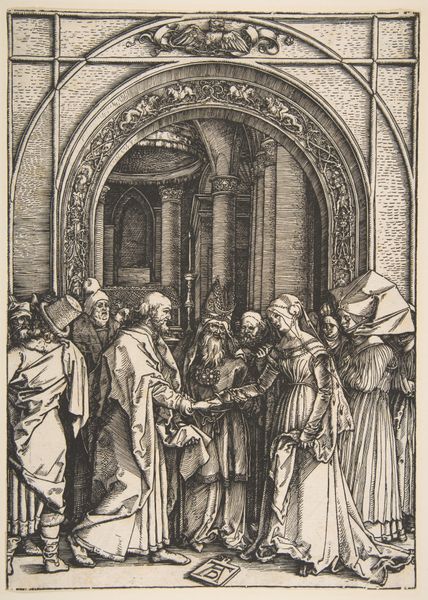
tempera, painting, fresco
#
narrative-art
#
tempera
#
painting
#
figuration
#
fresco
#
history-painting
#
italian-renaissance
Copyright: Public domain
Jean Fouquet painted this illumination of Pentecost sometime in the mid-fifteenth century, using tempera and gold leaf on vellum. Vellum, or calfskin, was a precious material. Preparing it involved soaking, liming, stretching, and scraping – intensive labor to create a smooth, receptive surface. Fouquet would have started by sketching the composition, then carefully layering tempera – pigment mixed with egg yolk – to create luminous colors and delicate details. Notice how the gold leaf captures and reflects light, symbolizing the divine. The use of these costly materials, like vellum and gold, elevated the status of the image, reflecting the patron’s wealth and piety. And the sheer labor involved – from preparing the vellum to applying the final touches of gold – imbued the artwork with a sense of reverence. By considering the materials and processes involved, we gain a deeper appreciation for the social and cultural significance of this exquisite work.
Comments
No comments
Be the first to comment and join the conversation on the ultimate creative platform.

